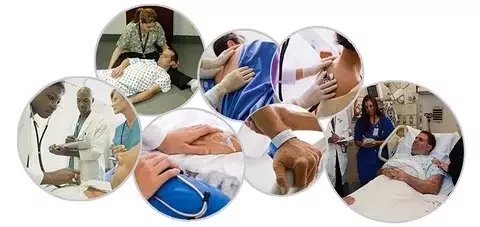
Patient Safety is a very broad topic in healthcare. Every patient experience is shaped by the physical environment, an important yet often neglected variable. (1)

As much as patients and their families expect to be treated in a safe and compassionate manner by skilled individuals, it should be a given that patients and family members expect to be treated in a safe environment, conducive to their care and treatment.
Proactive rounding is the key to promoting patient safety from an environmental standpoint and requires active attention to the daily circumstances that increase risks to both patients and staff. (2)
Use proactive rounding for best practice:
1. Make environmental rounds to identify opportunities to improve Patient Safety.
These types of rounds are commonly referred to as Environment of Care Rounds, Physical Environment Rounds, Safety Rounds, Continual Readiness.
2. Represent a multi-discipline Patient Safety team.
Include members such as: Safety Officer, Engineering (Facilities), Infection Prevention, Environmental Services (Housekeeping), Security, Emergency Management, and Privacy Officer. Each member needs to have a defined checklist of questions related to their expertise and skill set for the rounds, preferably an electronic checklist that can be completed on a tablet during rounds.
3. Tour every Department of the hospital, preferably unannounced to the Department staff.
Utilize the following approaches: Observe practices, such as handwashing; interview staff with knowledge-based questions; inspect mechanical devices and equipment; observe the environment, looking for obstructions and hazards.
4. Tour as a team on a set/routine schedule.
Hospitals that use a schedule are most successful at conducting and sustaining these Patient Safety rounds. Set a weekly schedule, for example "Every Tuesday at 10 am." Unavailable team members need to provide a substitute.
5. Engage the department staff and debrief with department management at the end of each round.
6. Don’t interrupt patient care, but also don’t shy away from sharing with patients why you are conducting rounds.
Results: As a result of these rounds you should be able to identify the systematic issues that affect patient safety in your facility. What items from the checklists consistently fail and potentially cause an unsafe environment? Is the data from your rounds quantifiable, and what corrective actions have been taken?

Lastly, consider this question often:
If you are not going to use the data from these rounds for Performance Improvement of Patient Safety, why are you doing them?
Sources:
(1) Joseph, Anjali, PhD, and Eileen B. Malone, RN, MSN, MS. "The Environment: An Often Unconsidered Patient Safety Tool." Web M&M. N.p., n.d. Web. 18 Aug. 2015. <https://www.ahrq.gov/cpi/about/otherwebsites/webmm.ahrq.gov/index.html>
(2) Susan E Mazer, MA. “Ways to Improve Patient Safety: How the Environment Plays a Critical Role.” Healing Health. <healinghealth.com>.
